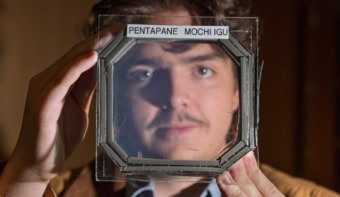
The electric shock you get from shuffling along a carpet might be the first experiment in electrostatics and tribology in most people’s lives, but what causes it remains an open question. “A lot of people had worked on what was taking place, for instance that electrons or ions were getting transferred from one material to another,” says Laurence Marks, a professor at Northwestern University in the US. “However, why this should occur in the first place was not understood.”
Despite this gap in understanding, the triboelectric effect plays a key role in a variety of fields. One perk is that the electricity generated could replace batteries, which tend to be heavy and need constant recharging. However, triboelectricity can also provide unwanted static charge, which as well as a nuisance when it builds up on clothes, can cause more serious problems when it leads to sparks and potentially fires during aircraft refuelling or in chemical processing plants.
Now Marks and his students Christopher Mizzi, who works in flexoelectricity, and Alex Lin, who specializes in tribology have come up with a convincing explanation for the effect. “When you combine tribology and flexoelectricity, you end up with an explanation of why and how triboelectricity happens that agrees exceedingly well with a wide range of different experimental results, including some which were puzzling before,” Marks tells Physics World. “We can even trace triboelectricity all the way down to how electrons behave around atoms, without invoking any ad-hoc approximations.”

Putting two and two together
Marks’s research interests span an unusually wide range from direct methods, surface structures, and density functional theory (DFT), to hip replacements, environmental catalysis, and tribology. His interest in the triboelectric effect kindled on reading a paper with what felt to him to be an unsatisfactory explanation of the effect. As fortune would have it, he had students working in both flexoelectricity and tribology at the time.
Tribology traditionally concerns the way surfaces in contact interact and the resulting friction and wear, or lack of it with lubricants. It is a long-established field, but the focus on nanomaterials in the past few decades has introduced new tools and perspectives. Discovered in 1964, flexoelectricity on the other hand, which relates strain gradients to a resulting potential difference, has “remained largely unexplored,” as Mizzi puts it.

Maxwell model optimizes motion energy harvesters
Marks, Mizzi and Lin modelled strain gradients that arise as a rigid sphere pushes into an elastic surface and then pulls away, what is called a Hertzian model. Although the values and distributions of these strain gradients depend on material compositions and structures, the researchers noted that the average values are more universal, and that the average effective strain gradient associated with Hertzian indentation is on the order of 108 m−1 in all materials at the nanoscale. Further analysis revealed that flexoelectric coupling to these gradients would lead to surface potential differences of 1–10 V or more, enough to drive charge transfer.
“We now have formulae that can guide one to make better triboelectric devices for wearable electronics, for instance you want small sizes, soft but somewhat sticky materials,” says Marks. “At least as important, one can also think of ways to avoid producing static electricity, for instance by changing the texture of the fibres used in clothes so we no longer need to add fabric softeners or cloths to dryers which end up in our water or land fills.”
Full details are reported in Physics Review Letters.
- This post was edited 22nd September 2019 to remove an errant endash.



